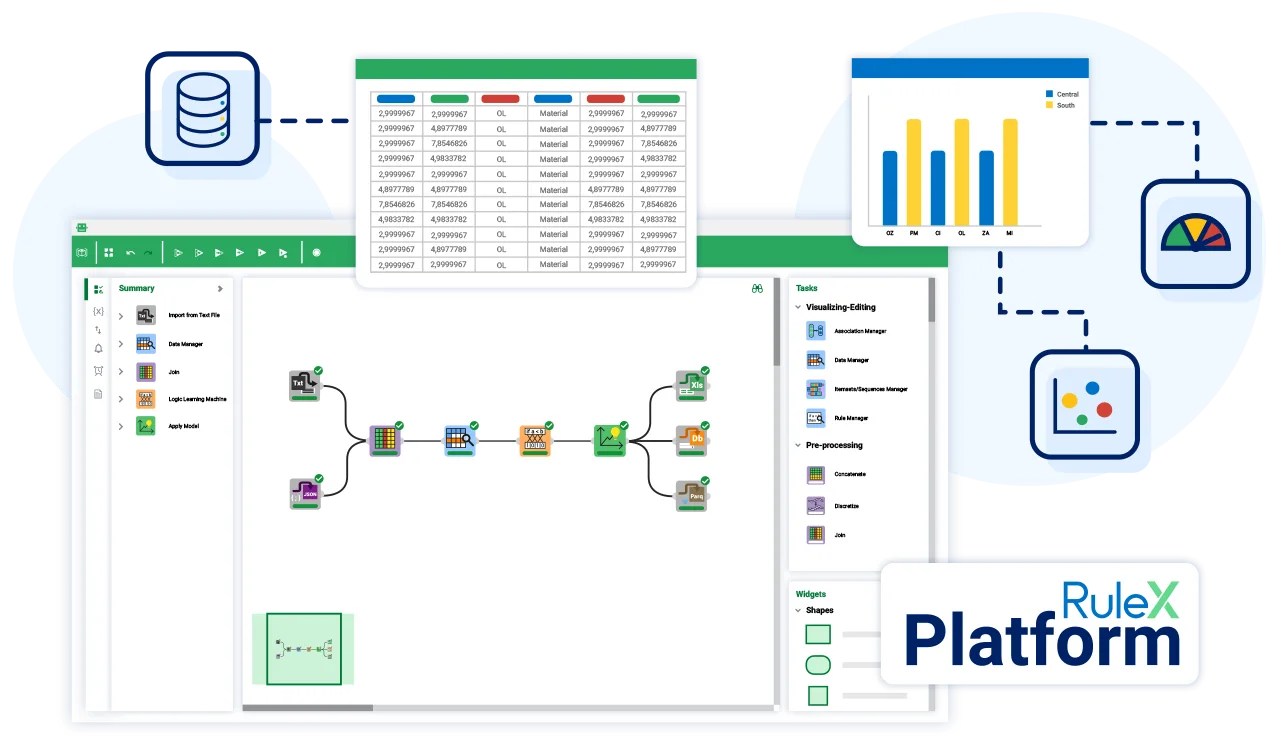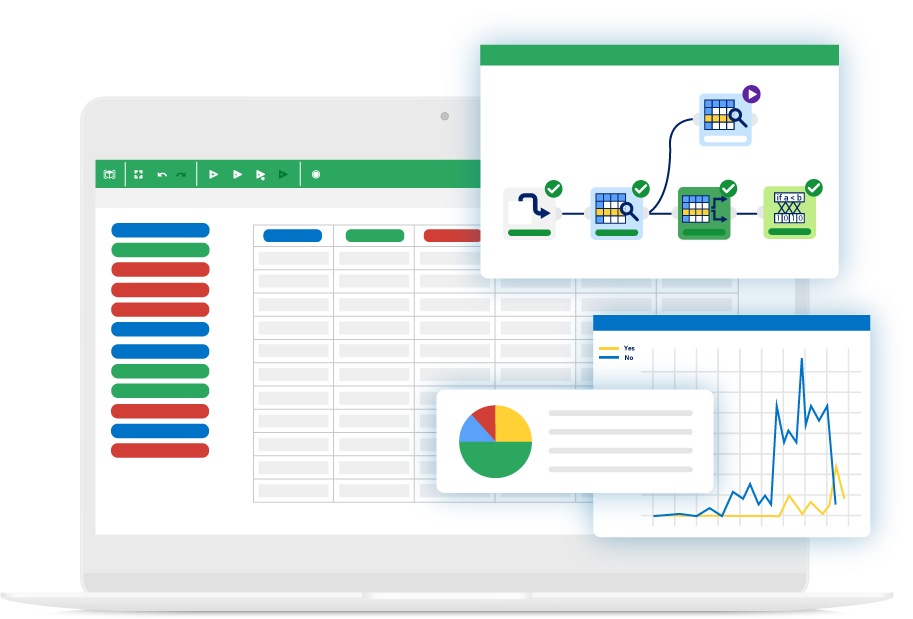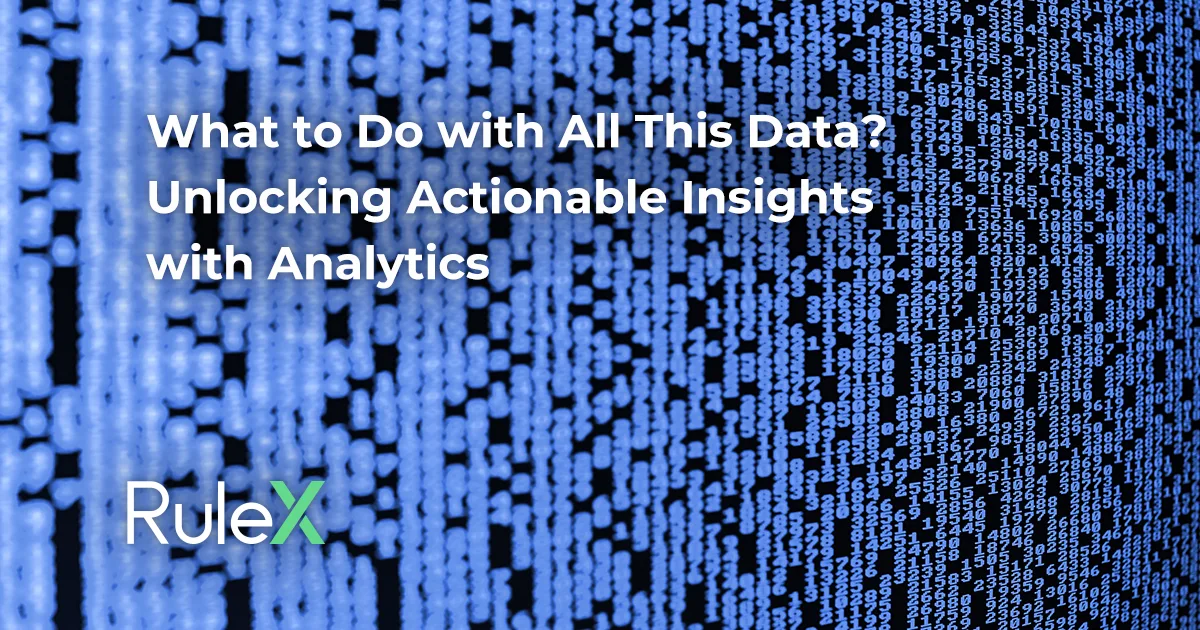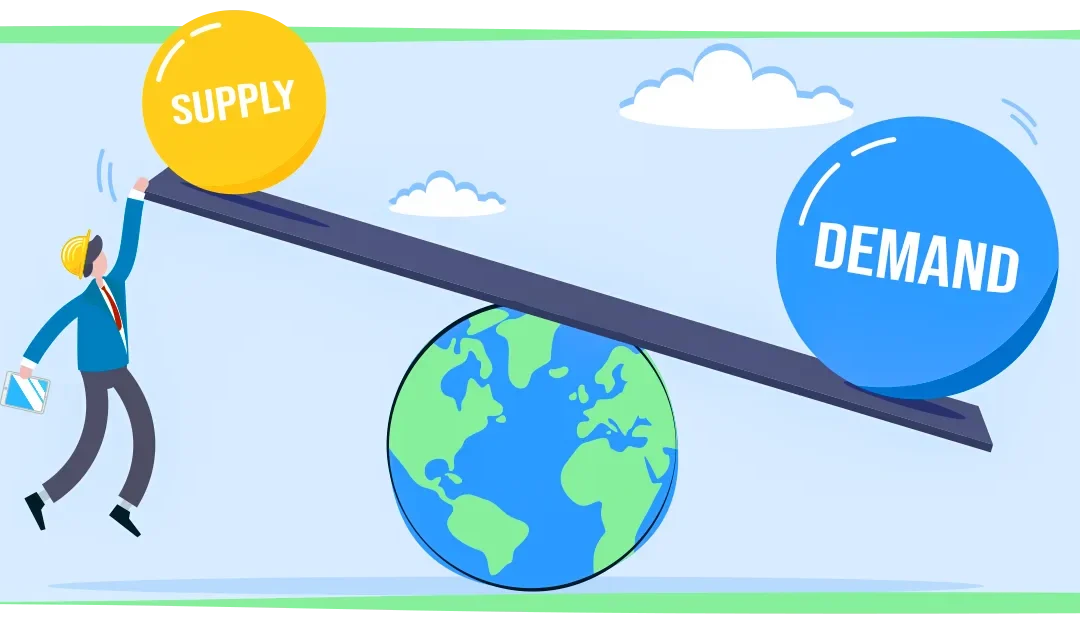The digitization of information, together with the proliferation of sensors and various monitoring systems, has dramatically increased the amount of data available to companies. Practically every business holds large amounts of data across all areas, from sales to production phases, and from marketing to logistics. When faced with such vast amounts of data, the the first question that comes to mind is: “What do we do with all this data now?”. Even if the question may sound a little naive, managing the complexity of all this data and figuring out what to do with it is a significant challenge for many businesses, regardless of their size. Of course, a decision maker will have no doubts about what they want to achieve: better decisions! But what does this mean? And how can data be converted into those outcomes?
In general, analytics refers to the process of transforming raw data into helpful insights that support decision-making. Analytics encompasses various techniques, including statistics, computer science, and domain-specific knowledge to extract actionable insights. The visualization of data and insights also plays a pivotal role since those who make decisions often do not have the time (or the technical skills) to explore all the details about the data and want to get right to the point: how is business going and how can I improve it?
What is Advanced Analytics?
Recent advancements in computer science have led to a new generation of analytics techniques that allow stakeholders to automatically uncover deeper patterns and make more accurate predictions. These techniques include machine learning, artificial intelligence (AI), natural language processing, and statistical modeling. Advanced analytics provides the means not only to understand what has happened but also to forecast future trends, optimize processes, and simulate various business scenarios.
For example, while traditional analytics might show that sales dropped in the last quarter, advanced analytics can use machine learning algorithms to predict sales for the upcoming quarter, identifying the key factors that might influence future outcomes. This capability is vital in industries such as finance, healthcare, and supply chain management, where predicting future trends (and the reasons behind them) can significantly impact decision-making.
Different analytics for different questions
Regardless of the techniques used to analyze data, decision-making requires answering a series of increasingly complex questions:
- What happened?
- Why did it happen?
- What is going to happen?
- What should I do?
Each question corresponds to a deeper level of insight into the data, allowing for progressively more informed decision-making. Accordingly, different levels of analytics can be identified, each aligned with these questions.
- Descriptive analytics is the simplest form of analytics, aimed at answering the question: “What happened?”. Its goal consists in summarizing and describing historical data using simple techniques like data aggregation, basic statistics and reporting. For example, reviewing last quarter’s sales figures is a typical descriptive analytics task.
- Starting from descriptive analytics insights, diagnostic analytics addresses the question: “Why did it happen?”. Its objective is to understand the underlying causes of events and trends identified by descriptive analytics, using techniques such as drill-down and correlation analysis. A typical diagnostic task involves identifying events that are correlated with malfunctions in a plant.
- The objective of predictive analytics is to forecast events that are likely to happen in the future based on historical data. It aims to answer the question “What is going to happen?” using techniques such as regression analysis, machine learning, and time series forecasting. For example, companies might use predictive analytics to forecast future sales based on past trends and other information.
- Prescriptive analytics is the most advanced type of analytics, focusing on recommending actions to optimize business performance. It answers the question: “What should we do?”. Prescriptive analytics often combines predictive models with optimization algorithms to propose the best course of action. For instance, a logistics company might use prescriptive analytics to optimize its delivery routes based on traffic patterns, demand prediction, and delivery schedules.
Visual platforms for analytics and programming languages
Several tools can support analytics at different levels. Visual platforms, for instance, help make data insights accessible to a broader audience through customized interactive dashboards, charts, and reports. The ability to visualize data helps users, even those without a technical background, to comprehend complex data sets and make informed decisions. The goal of these tools is to hide complexity from the end user, showing only the relevant information.
On the other hand, programming languages like Python and R offer numerous libraries that enable the implementation of virtually every state-of-the-art analytics technique. Their goal is to provide a wide range of methods and maximum flexibility to combine them according to the user’s needs. In-depth technical skills are however required to master the complexity of programming languages.
Performing analytics on Rulex Platform
Rulex Platform was designed to overcome the limitations of both visual software and programming languages, offering the ease of the former and the flexibility of the latter. Rulex is a no-code platform that integrates several analytics tools to address the needs of different types of users.
Decision makers can use Rulex Studio to get a bird’s-eye view of their business data. This platform component allows users to create interactive dashboards and custom UIs where they can consult graphs and tables, applying the necessary filters and aggregations. They can also interact with the underlying data, launching computations, providing feedback on results, and even updating and synchronising information in seconds.
Data scientists can make the most of a wide range of data management and artificial intelligence tools offered by Rulex Factory. This platform component, where flows are built in a drag-and-drop environment, can replace the tools commonly used to manipulate data and extract models, such as Pandas and TensorFlow, improving development speed and solution usability.
It provides a comprehensive portfolio of machine learning methods, ranging from unsupervised learning (clustering, anomaly detection) to supervised learning (classification, regression), and even includes proprietary algorithms, such as the eXplainable AI Logic Learning Machine. Coding enthusiasts can also integrate their Python or R code into Rulex flows, reducing the need to switch data back and forth.
Data engineers and data integration specialists use Rulex Factory to seamlessly merge data from different sources, bringing them together in a single view. The platform supports the integration of almost any data source, from common relational databases to everyday file types such as Excel and PDF. Additionally, users can connect to data stored in remote locations, including cloud storage or HTTP servers.

How Rulex can answer your questions
Regardless of the team you’re in or the data job you have, Rulex Platform can help answer all your analytics questions.
By using data management tools and building interactive dashboards, you can better understand what happened (and what is happening) to your business. Performing statistical correlations and extracting explainable machine learning models from your historical data can help you identify the root causes of your business trends, understanding why they happened. Inferring from machine learning models trained on past data allows you to predict what is more likely to happen in the future. Last but not least, several tools can support you in understanding the best action you can take.
Optimization plays a pivotal role in providing a targeted action plan, as it finds the configuration that maximizes desired results (expressed in an objective function) while fulfilling all the operational constraints. Nonetheless, optimization has two well-known drawbacks: (i) its implementation is quite complex, especially in presence of several constraints, and (ii) the computational effort to find the optimal solution can grow exponentially.
Rulex Platform has solutions for both these issues with its mathematical optimization task, Build & Solve. The task dramatically simplifies the definition of linear programming problems, speeding up the setup phase (i), and implements specific algorithms able to find a feasible solution in minutes, or retrieve sub-optimal alternatives when the optimal solution cannot be retrieved within a reasonable time-frame (ii).
Question
Rulex Platform tools that provide answers
What happened?
Rulex Studio (Dashboards)
Data Manager (Queries)
Data integration tasks (Join, Pivot Table)
Why did it happen?
Statistical analysis
Correlation plots
Explainable AI tools
What is going to happen?
Machine learning algorithms
Time Series Analysis
Explainable AI tools
What should I do?
Mixed Integer Linear Programming
Build & Solve
Rule-Based Control
Rulex Studio (Custom UI)
Hands-on analytics: the supply chain department of a CPG manufacturer
Let’s get practical and explore how Rulex Platform can assist the major players in a manufacturing company with their everyday tasks.
In the supply chain department of a large CPG (Consumer Packaged Goods) manufacturer, managers face the challenging task of ensuring that goods are sent to several distribution centers while fulfilling all requests and reducing delivery costs. Their daily responsibilities involve managing multiple datasets stored in different locations, including production data, orders, carrier information, and delivery costs. To gain a comprehensive overview of their business performance, they can use Rulex Platform to integrate all this data and create a dashboard containing relevant insights. Experts can rely on this dashboard to access historical data about orders, production, and transportation, updating it with fresh information as needed.
The company’s data scientists, in turn, can employ Rulex’s statistical functions and machine learning techniques to analyze past behaviors and predict future outcomes. For instance, they can investigate why a shortage occurred by using the Logic Learning Machine, which generates if-then rules correlating the outcome (e.g., the shortage) with its potential causes. They can also forecast the demand for various items from logistics centers in the coming days, weeks, or months using time series models like ARIMA in the Auto Regressive task.
Finally, and most crucially, Rulex Platform can recommend specific actions to reach target goals. After using Rulex to process data and forecast missing variables (such as demand), planners can use production and demand insights to determine what, when, and where to ship.
Rulex’s prescriptive tools, such as optimization tasks, guide the distribution of goods. Rulex Platform’s Network Optimizer and Transport Optimizer tasks are specifically designed to address this challenge. Their outcome is a list of goods together with the quantity to be sent in each location and the optimal configuration to perform the deliveries reducing costs and environmental impact.
What should you do with all your data?
If you feel you are not making the most of your data, maybe it’s time to explore Rulex Platform and its rich suite of advanced data management and analytical tools.
Request a 30-day free trial now.




